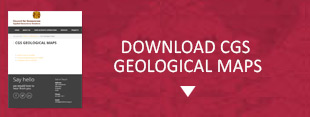
35TH INTERNATIONAL GEOLOGICAL CONGRESS
27 AUGUST - 4 SEPTEMBER 2016 | CAPE TOWN, SOUTH AFRICA
Sponsors

















35 IGC SAGPGF







35TH INTERNATIONAL GEOLOGICAL CONGRESS
27 AUGUST - 4 SEPTEMBER 2016 | CAPE TOWN, SOUTH AFRICA
My IGC
Mathematical Morphology in Geosciences and Geoinformatics
DESCRIPTION
To address the intertwined topics—like pattern retrieval, pattern analysis, spatial reasoning, and simulation and modelling for understanding spatiotemporal behaviours of terrestrial phenomena and processes—various original algorithms and modelling techniques that are mainly based on mathematical morphology (originally founded by Matheron and Serra) are available. This course that presents fundamentals of mathematical morphology and their applications in geosciences and geoinformatics would be useful for those with research interests in image processing and analysis, remote sensing and geosciences, geographical information sciences, spatial statistics and mathematical morphology, mapping of earth-like planetary surfaces, etc.
Date:
Sun, 28 August
Presenter:
| Name | Organisation | Email address |
| B. S. Daya Sagar |
Indian Statistical Institute-Bangalore Centre, India |
bsdsagar@isibang.ac.in |
Programme
Morning Session:
- Introduction to Mathematical Morphology
- Mathematical Morphology in Terrestrial Pattern Retrieval
Part 1: Terrestrial surface characterisation: a quantitative perspective
Part 2: Size distributions, spatial heterogeneity and scaling laws
Part 3: Morphological shape decomposition: scale invariant but shape dependent measures
Part 4: Granulometries, convexity measures and geodesic spectrum for DEM Analyses
- Mathematical Morphology in Geomorphologic Modelling and Simulation
Part 1: Fractal-Skeletal-Based Channel Network Model
Part 2: Synthetic models to understand spatio-temporal dynamics of certain geo(morpho)logical processes
Afternoon Session:
- Mathematical Morphology in Quantitative Spatial Reasoning and Visualisation
- Mathematical Morphology in Spatial Interpolations
Part 1: Conversion of point-data into polygonal map via WSKIZ
Part 2: Visualisation of spatiotemporal behaviour of discrete maps via generation of recursive median elements - Directional Granulometries in Shape Classification
- Morphological Distances in Classification of Zones, Pairs of Zones, and Clusters in a Spatial System
- Quantitative Characterisation of Complex Porous Phases via Mathematical Morphology and Fractal Geometry
Registration Details
To book and pay, please use your existing registration log in (if you are already registered). New delegates can book using the registration form on the website (create your profile and register for the conference and then book your additional workshop)
Presenter Biography
B. S. Daya Sagar B. S. Daya Sagar is a full Professor at the Indian Statistical Institute, Bangalore, India. Sagar served as a Grade-A Research Scientist at the Centre for Remote Imaging Sensing and Processing (CRISP), the National University of Singapore (1998–2001); and as an Associate Professor at the Faculty of Engineering and Technology, Multimedia University, Malaysia in 2001–2007. He received a BSc (1987) majoring in Earth Sciences from the Andhra University, and an MSc (1991) and a PhD (1994) in Geoengineering and Remote Sensing from the Faculty of Engineering of the Andhra University, India.
B. S. Daya Sagar is a full Professor at the Indian Statistical Institute, Bangalore, India. Sagar served as a Grade-A Research Scientist at the Centre for Remote Imaging Sensing and Processing (CRISP), the National University of Singapore (1998–2001); and as an Associate Professor at the Faculty of Engineering and Technology, Multimedia University, Malaysia in 2001–2007. He received a BSc (1987) majoring in Earth Sciences from the Andhra University, and an MSc (1991) and a PhD (1994) in Geoengineering and Remote Sensing from the Faculty of Engineering of the Andhra University, India.
Since 1991, his research has involved the development of original algorithms and modelling techniques that are mainly based on mathematical morphology, fractal geometry and chaos theory. He has about 70 scientific publications to his credit in renowned, peer-reviewed, high-impact journals. He authored books on Qualitative Models of Certain Discrete Natural Features of Drainage Environment (Allied Publishers: New Delhi, p. 231, 2005), and Mathematical Morphology in Geomorphology and GISci (CRC Press: Boca Raton, p. 546, 2013). He is an elected Fellow of the Royal Geographical Society (1999), Fellow of the Indian Geophysical Union (2011), Senior Member of the IEEE (2003) and was a member of the New York Academy of Science (1995). He is the recipient of prestigious awards, including Dr Balakrishna Memorial Award from the Andhra Pradesh Akademi of Sciences, 1995; Krishnan Gold Medal from the Indian Geophysical Union, 2002; and Georges Matheron Lectureship Award of the IAMG, 2011.
His involvement in various International Association for Mathematical Geosciences (IAMG) activities was conspicuous since 1999, and he guest-edited a special issue (MG, v. 33, no.3, p.245–396, 2001) in memory of the Late Professor SVLN Rao. During 2014, he took the initiative to start the first ever IAMG students' chapter in India. He has organised IAMG Pre-Conference workshops and chaired a special session on 'Mathematical Morphology in Geosciences and Geoinformatics' during the 2014-IAMG conference held in Delhi, India. He has invited several IAMG members, including Distinguished Lecturers, to India to deliver lectures. He took the initiative in the creation of Wikipedia pages on several important IAMG activities, and is spending time and effort with the help of Dr. Ricardo Olea in editing these pages. He has organised eight workshops/conferences/training schools/seminars, and has guest-edited six special issues for reputed journals. He is currently serving on the Editorial Boards of Computers & Geosciences, Image Analysis & Stereology, and Frontiers: Environmental Informatics. As a Deputy Chairman of the Centre for Applied Electromagnetics (CAEM), at Multimedia University, Malaysia, he nurtured a group of young researchers to deal with developing morphology-based algorithms for surficial mapping and terrestrial characterisation. As a Founding Head of the SSIU that was set up in 2009 at the Indian Statistical Institute, he established the Spatial Informatics and Quantitative Geomorphology Research Groups. He is the founding chairman of the Bangalore Section of the IEEE Geoscience and Remote Sensing Chapter since 2012. For more details about him, the following webpages may be referred at http://www.isibang.ac.in/~bsdsagar, https://en.wikipedia.org/wiki/B._S._Daya_Sagar.
 Field trips
Field trips  Sponsorship & expo
Sponsorship & expo  Registration
Registration Tours
Tours  Promotion
Promotion 














 Conference Programme
Conference Programme  Field trips
Field trips  Sponsorship & expo
Sponsorship & expo  Volunteer
Volunteer  GeoHost
GeoHost  Registration
Registration Tours
Tours  Promotion
Promotion  Publications
Publications









